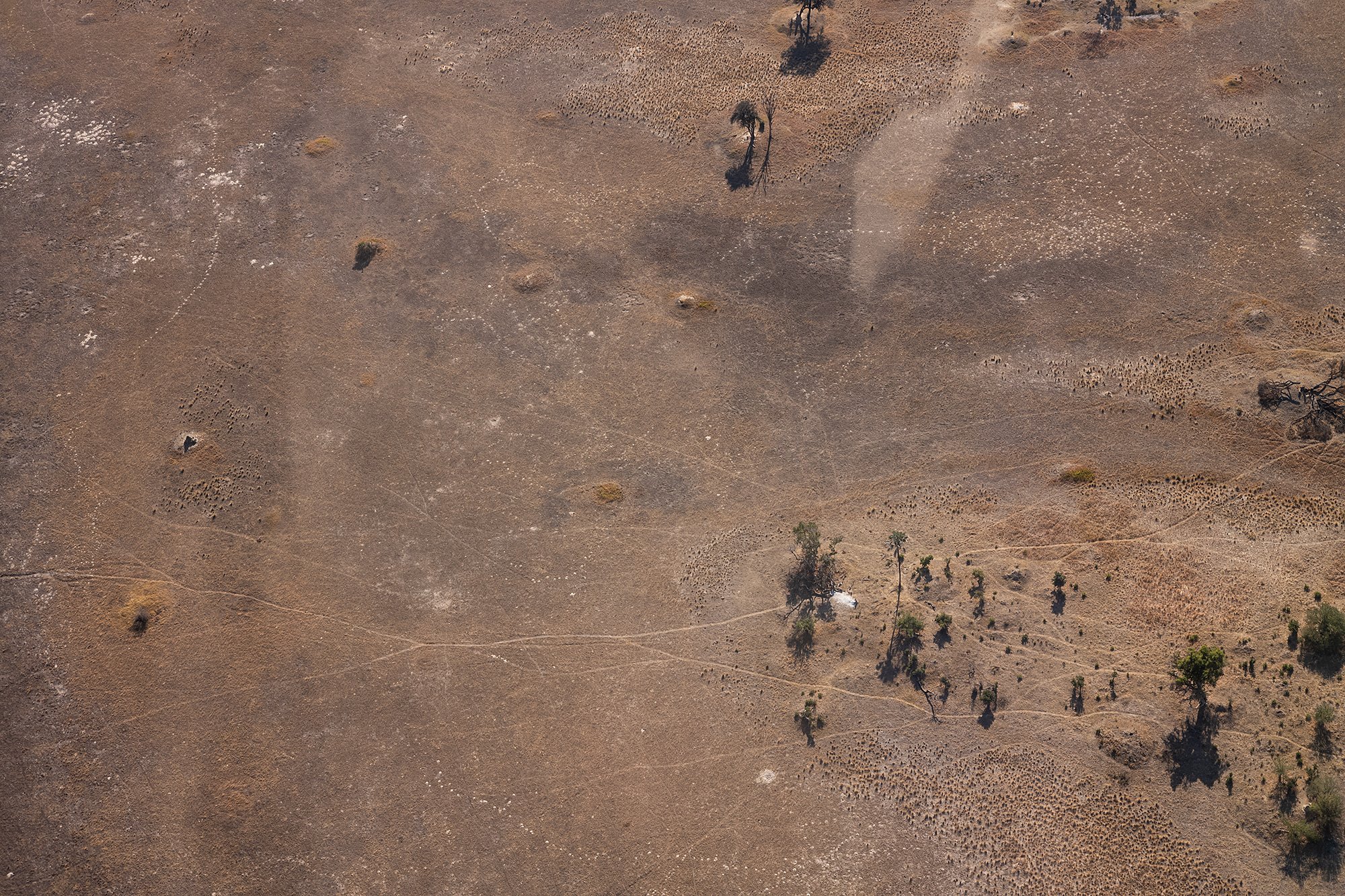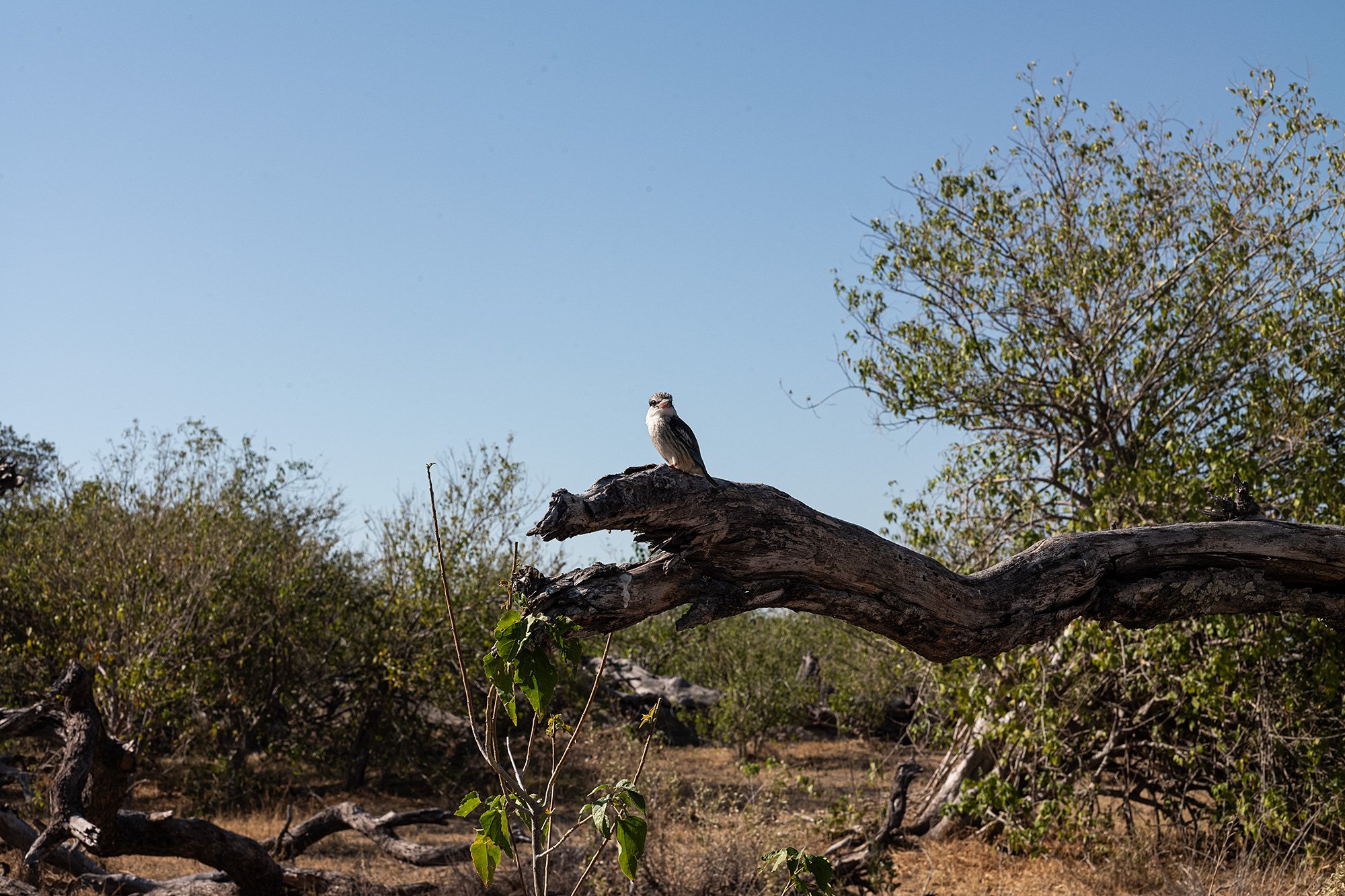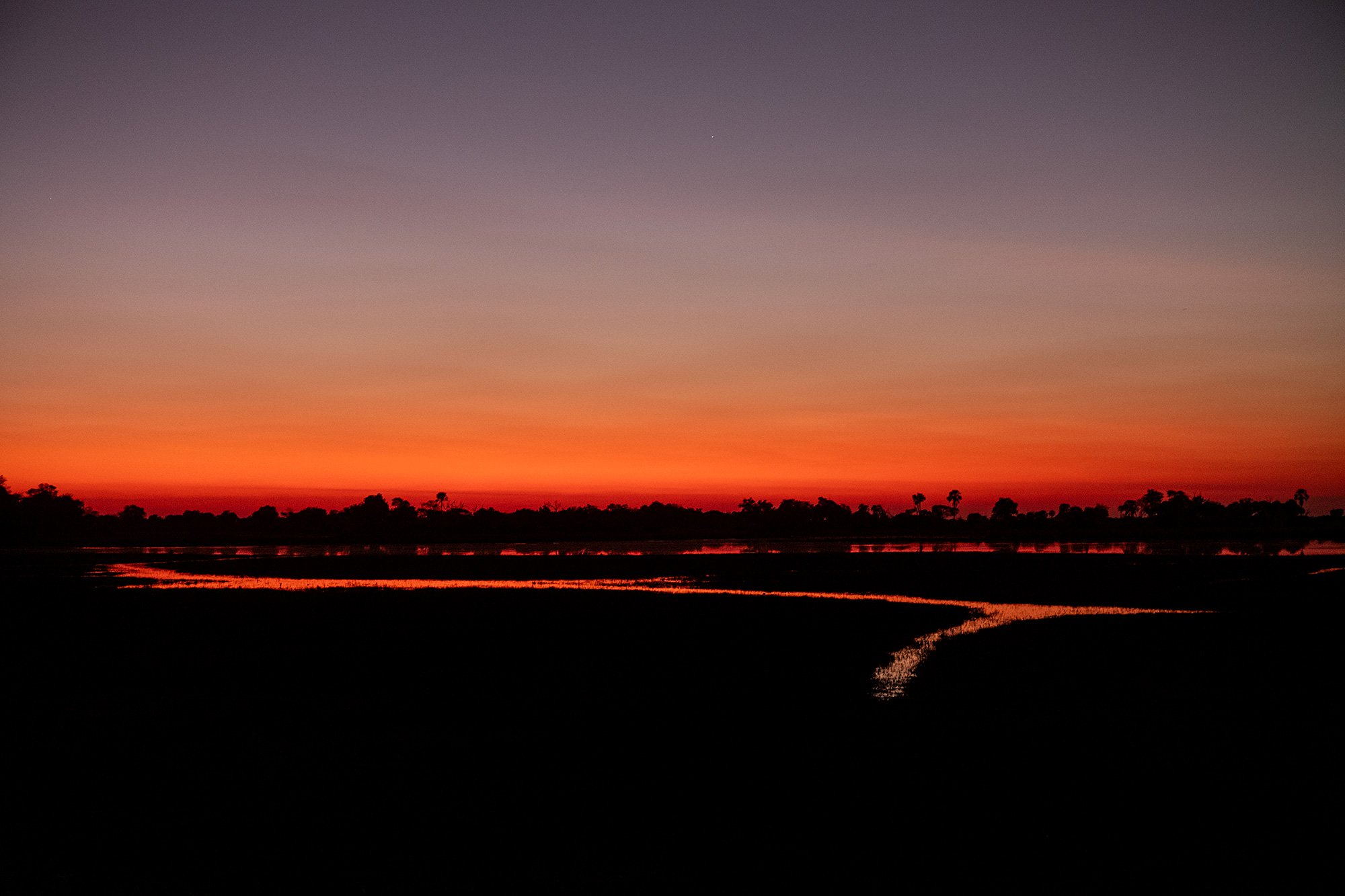
Okavango Delta
Chapter one
An introduction to the Okavango Delta.
Gao meets me at 0800 to take me to the airport. He leads me into the terminal to make sure I connect with a representative of the camp at which I’ll be staying. He needn’t have worried.
A handful of people mill about the lobby. One wears a Ker & Downey fleece. She’s a manager at one of their camps. She’s coming off of her one month break having spent time at home with her two children. She’s heading back into the bush for her next three-month rotation.
I ask her what her favorite camp is and she tells me that her favorite camp is always where she’s working, but she has a special place for Kanana; it’s where she got her start. Coincidentally, Kanana is where I’ll be staying for the next four nights.
It’s a while before our flight and I ask her how she came to work at the lodge. She tells me she used to work in a hospital and then started doing secretarial work for the safari company. One thing then lead to another. Ultimately, she’s thinking of opening a tuck shop in Maun. She wants to be close to her family.
Another representative is there to see her off. She works in the office and I ask if she ever gets to the visit the camps. She does, she says, but only if there’s business to attend to. Usually it’s in and out; they rarely let her sleep over.
I ask if I should leave my extra bag with her. I don’t need everything I’ve been carrying and they’ve offered to store some of my clothes while I’m in the bush. A man hands me a boarding pass and takes my bag. I ask him what happens if I lose the return ticket. Will I be forced to stay at the camp? He laughs.
He leads me to security and I walk through to a waiting room set up with folding chairs. A handful of people are scattered throughout, waiting for their flights.
As I wait a group of students arrives dressed in uniform. They make a bee line to a water cooler and fill their water bottles before heading out to the tarmac. I wonder where might be headed, such a large group.
Our flight is called and I head to a waiting van along with Rati and one other individual who manages the maintance for all Ker & Downey camps. The van drives us to the plane. Along the way we pass the group of students. It turns out they’re in a band, there to welcome dignitaries who will arrive on the inagural direct flight to Maun from Windhoek.

The plane is tiny, with only five passenger seats. It’s the smallest plane I’ve been on. I ask if I can sit next to the pilot. He says yes and I climb aboard, strap myself into the co-pilot seat. He keys in the Kanana camp into the GPS and taxiis down the runway. Within minutes we are aloft.





It’s a relatively short flight, and I spend the entire time gazing out of the widows, over the delta, still mostly dry. I spot elephant and giraffe and antelope on the various animal trails, heart-shaped pools, and dry islands awaiting the floods.







We land on an airstrip near the camp beside a small lake. As the pilot taxis into position near two open Landcruisers I ask if I can fly on the way back. He laughs and says no.
Sue greets me and helps me put my bags in his Landcruiser. Rati is helped into another one. The pilot climbs back into his aircraft and we wait for him to take off before we leave.


We take the long way around to the camp, pausing to admire a striped kingfisher, red lechwe, and hippos. It's the first time I've seen red lechwe and I am fascinated by the shape of their bodies, their longer hind legs having adapted to help them leap through the water. There's a strong scent of wild sage in the air.
It's intoxicating.




At the camp, I’m welcomed with a song and then a manager shows me around. We sit on a sofa swing before the fire pit. Water has started to creep forward, but it has a long way to go before it reaches us. He tells me that they usually do boat trips year-round but the water level is low this year. When the water is high they can do boat trips right from the fire pit.

The manager offers me a drink and I ask for a mimosa. A staff member brings it to me as the manager outlines the schedule for the camp. Wake up call is at 0530 followed by breakfast at 0600 by the fire pit. The morning drive is scheduled until around 1130. Back at the camp, a buffet brunch is served. Tea time is at 1530 followed by an afternoon drive. Dinner is served at 1900 to everyone at a long table joined by guides and off-duty management staff followed by an optional night drive.
We talk about other activities that the camp provides: fishing, mokoro (flat-bottomed boat) trips, a sleep-out tent positioned on a raised platform in the bush. I want to do them all. He tells me I have the time.
I ask him how busy the camp is. He tells me that there were 11 guests last night; tonight there are 14. The maximum capacity is 20. I tell him I look forward to meeting the other guests and he leads me to my tent. An impala greets me on the path.

After unpacking and checking out the tent I walk back to the main lodge. An elephant wanders along the perimeter of the camp, searching out choice morsels of food. The staff watch it carefully to make sure it doesn’t venture too close to where we’ve set up for lunch.

I sit with a local interior designer, Peacemaker, and his protegé. We’re joined by one of the managers and a man from San Francisco. Peacemaker has been involved in updating the lodges and he’s been doing a tour of the various Ker & Downey properties to see how things are going and what might be refreshed. His protegé is younger, just starting out. On the side she has a business doing piercings. I told her if she did tattoos I’d have considered getting one.
After lunch I join Baams for our first drive. We head out of the camp and drive by the landing strip before heading deeper into the park. We fjord rivers and traverse dusty plains, spotting red lechwe bounding through the water, and hippos emerging from the bush to their evening spots in the river.



As the afternoon shadows lengthen we continue our explorations, passing herds of impala and lone warthogs on the plains. Fjording one river we pass by a stack of mokoro, flat-bottomed boats used to navigate the waterways.






Back at camp the sun paints the sky red. We take drinks by the fire pit, chatting with each other until we are welcomed to table with song.


After dinner Beams takes us on a night drive. We spot an owl, which kindly waits for us to take photos of it before flying off. Later, we come across a pair of hippos. We can hear them rustling in the bush as we search for them with our torches.
At dinner I had asked Beams what his plans are for the future. He tells me he’s a farmer; in five years he plans to go back to that. He asks me where I live and I tell him I’m homeless, traveling the world. And if he were to give me a piece of land? I tell him I’d have to buy cows. He laughs.
Earlier in the day I had had a conversation with Beams and Peacemaker. To be a man in Africa is to have cows, they told me. It’s not even a status thing; it’s just how it is. 🇧🇼
3 July 2024




